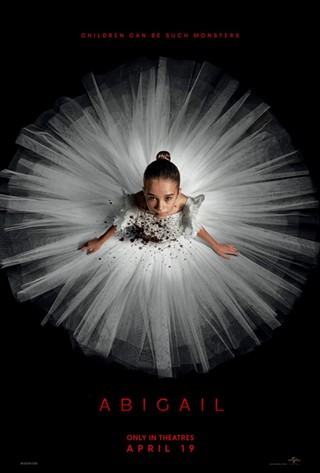Seeing such a scene, you might be led to ask: Should radioactive mutant chickens be treated just like regular chickens? Why is the burned man sitting by the window pulling the big lever? And can a head be made into good, high-quality erasers?
Most of these questions are asked, answered and then slowly ground into delicious, low-cost sausages in the film Eraserhead, which is a model for the kind of movie that Christo-Islamic fundamentalists will be forced to watch after the nuclear holocaust, when rabid dogs and Ashley Olsen's undead plastic surgeon rule Hollywood. It's also David Lynch's first feature film, and it remains one of his best, 30 years after its initial release.
Though Eraserhead has been available on home video for more than a quarter-century, it really can only be appreciated on a big screen, with movie-quality stereo speakers, while you're surrounded by strangers who may or may not be infecting you with incurable diseases.
That's because Eraserhead is just as much about the texture of sound and imagery as it is about its story. Instead of a series of shocks, Lynch created, for the film's entire runtime, a much deeper sense of horror. It's not suspense; it's the feeling that something horrible has just happened, and even though you know nothing will ever be good or beautiful again, you can't remember why, or who's to blame.
This effect is attained in grainy black-and-white shots of what appears to be either the world's most desolate, abandoned slum, or a post-apocalyptic landscape where, in spite of the destruction of most infrastructure, people are still obliged to go to office jobs.
Henry Spencer, the title character, lives in an apartment that can only be reached by entering a rickety elevator and staring, blankly, at the open door for 99 seconds until it finally, and with a vague sense of malice, closes and lifts him to the bed-sitter limbo where he waits out his vacation.
One day, the Beautiful Woman Across the Hall tells him he has received a phone call from his ex-girlfriend. She has given birth to ... something, and Henry is expected to act as father and protector.
The story, as compelling as it is, is only a small part of the overall effect. Much of it comes from the frozen, shocked stare of actor Jack Nance. More comes from tiny moments of discomfort that rise to the level of sickened terror: a shot of a woman sleeping, her arms hopelessly tangled in the sheets; tiny roasted chickens that ooze blackened blood when carved; a grandmother who smokes cigarettes, though she may be dead. Compared to the kind of close-up vivisection which is currently so popular in horror cinema, Eraserhead's imagery seems mundane, and yet it's so much more effective, because its emotional content is consistently unsettling.
A lot of this effect comes from Lynch's homemade soundtrack, which is composed of rolling-machine noises, metallic screeches and, for nearly 45 minutes, the sound of a baby crying. The grating noises (which had a huge influence on '80s industrial music) are broken only by the rare moments of dialogue (the entire script is said to be 27 pages long) and the singing of the mysterious Lady in the Radiator.
The art direction, too, helps create the mood of the film. Most famous is the prop of the mutant baby. The strange creature was inspired by the rotting, skinned rabbit in Roman Polanski's Repulsion, and to this day, no one is quite sure how Lynch created it. Its head is like that of an embryonic cow; wrapped in bandages and showing no sign of arms, legs or ears, it wheezes and cries and grows horrid pustules. Its entire existence is a moralizing rejection of sexuality and, by extension, of life.
Which pretty much sums up the mood of Eraserhead. From top to bottom, every element of this film--the sound, the lighting, the props and sets, the style of acting and even the editing--all aim at a single purpose. In terms of that effect, it may be the most cohesive movie ever made, and it's certainly a masterpiece. I suppose you shouldn't take young children or Mike Huckabee to see it, but for everyone else, especially those with an interest in the neglected possibilities in the art of narrative cinema, Eraserhead remains one of the few must-see films in American movie history.










